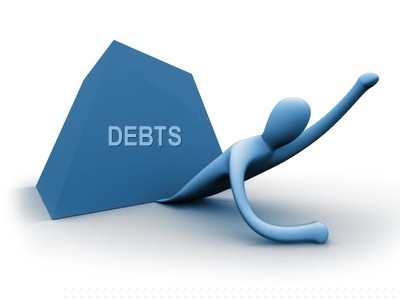Good Debt v Debt Types of Good and Bad Debts
Post on: 16 Март, 2015 No Comment

By definition, debt is simply the process of one party borrowing money from another party. And for most of us, debt is a necessary part of life.
We borrow money so that we can buy goods or services that we could otherwise not afford right now. We borrow with the promise and expectation of repaying the borrowed funds sometime in the future – a time when expect to have money to do so.
In this sense, all debt is the same: We take now and we give back in the future. But because debts can have positive or negative consequences, they are typically thought of as a good debt or a bad debt.
That reality makes it wise for all borrowers to weigh their overall balance of good debt vs. bad debt.
Whats Considered Good Debt?
In general, good debt is that which increases your net worth and/or helps you to generate value. Good debt allows you to manage your finances more effectively, to leverage your wealth, to buy things you need and to handle unforeseen emergencies .
Examples of good debt are taking out a mortgage. buying things that save you time and money, buying essential items, investing in yourself by borrowing for more education .
Taking out a Mortgage
Most of us cannot afford to pay for a home with cash. Borrowing to finance a home allows you to pay back a home loan over time, with the hope that the home itself will increase in value, so that when it is sold, you can realize a profit. In addition, the interest you pay to a bank or mortgage company is usually tax-deductible, so while you are paying for the privilege of borrowing money, you are saving on your tax bill. Residential and commercial real estate can also be an excellent source of rental income, so borrowing money to invest in this way can be considered a form of good debt.
Borrowing but Saving Time and Money
If you borrow to weatherize your home, you will save money on your utility bills. The savings you accrue could pay for, or even exceed, the cost of the money you borrowed.
Investing to Increase Future Earnings
In general, the more education a person has the greater his or her future earning power. While a higher education alone is not a guarantee of wealth and success, taking out a student loan is almost aways considered a wise option. Whether the money is for college, technical school, the loan is more often than not merely an investment likely to pay for itself many times over.
Borrowing for Business
Good ideas, hard work, ambition and luck are not always enough to launch or support an entrepreneurial endeavor. Seed capital or small business loans are often a necessary component of building and sustaining a profitable commercial enterprise. Borrowing money to build wealth is another example of taking on good debt to create future value.
What is Bad Debt?
In contrast to good debt, bad debt is that which does not increase wealth and/or is used to purchase goods or services that have no lasting value. While no one would argue against ever buying a non-essential item, you can put yourself into crippling debt too easily by not restraining yourself from buying luxuries that you don’t really need, or that exceed your income or your ability to pay for in a timely manner.
Bad debt can also be any form of debt that carries a high interest rate. Making only the minimum payments on your high-interest credit cards. while continuing to keep balances on your accounts month after month, is the most common form of bad debt.

The amount you pay in interest, late fees and any penalties may exceed the value of the product or service you finance.
Borrowing money from questionable sources like payday lenders and finance companies can also considered a form of bad debt; So, too, is any amount of borrowing that lowers your credit score.
Bad Part of Good Debt
It is also important to understand that even good debt can have negative aspects when:
- The interest rate is variable or higher than otherwise available.
- You are not taking advantage of various tax breaks on a mortgage or home equity loan or line of credit.
- You have too much secured debt, which puts your assets in jeopardy.
- You carry too much debt into your retirement years. when your income is reduced.
- Your monthly debt payments, including mortgages and credit cards, take up more than approximately 36 percent of your gross monthly income.
While there is some school of thought that purchasing essential items – like a car – is considered good debt, thats only the case if you are able to finance the vehicle on highly favorable terms to you. Cars are depreciating items. They are worth less every month.
If you can finance a car for three years or less or if you can make such a large down payment on a car that the month installment payments are low, those are terms banks would consider favorable.
Financing a new car for more than 48 months (four years), with little or no money down, would be considered unfavorable by other lenders who would evaluate you as a prospect for another loan.
The distinguishing factor between good debt and bad debt is the overall value of the debt. That is, which costs you less money in the long run?














